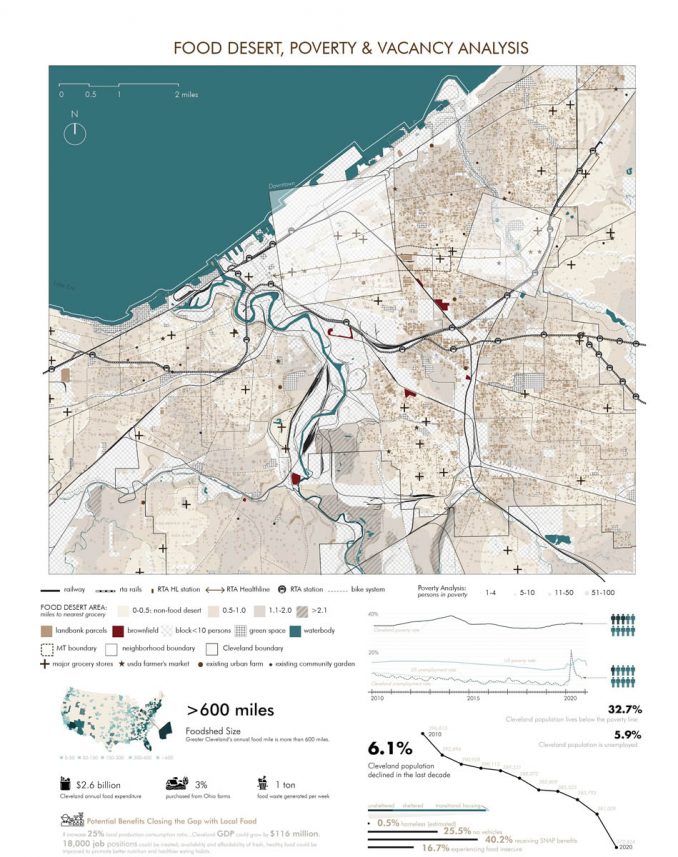
As a representative US industrial city of the 20th century, Cleveland experienced major population decline and astonishing property vacancies beginning in 1960. In the last decade, Cleveland population has shrunk down 6.1 percent, and by the end of 2020, there are 44,259 vacant parcels and 12,179 vacant structures across the city. Population loss, poverty, unemployment, food desert, food miles and vacancy – contamination and lack of organic matter – are driving a movement towards a holistic approach to rationalize functional food development.
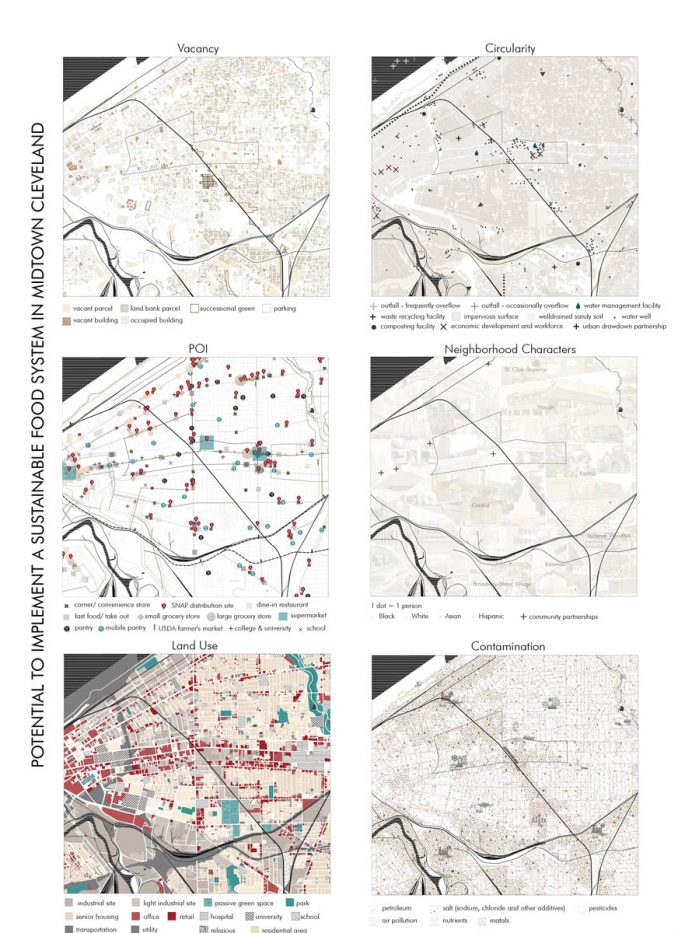
The good news is, in the late 1970s, Cleveland’s municipal government has already began supporting urban agriculture, and in recent years, Cleveland has integrated border food system thinking into its policy.
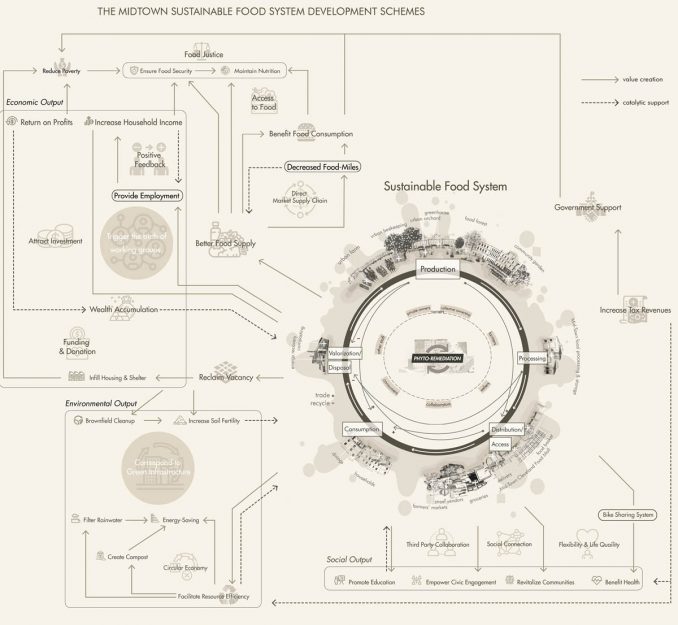
Within this context, research on food desert, vacancy, demographic statistics, and the potential to implement sustainable food system in Cleveland are conducted. MidTown Cleveland is quite noticeable geographically and demographically based on these parameters. This area has high vacancy rates and is the intersection of diverse communities. Midtown has few residents currently, but its daytime population swells to 18,000, making it one of Northeast Ohio’s biggest job centers. It has great potential to respond to repurpose vacancy for food development.

Hence, the project proposes a sustainable food system (SFS) development scheme for MidTown Cleveland, where positive values along three dimensions: economic, social and environmental are generated. The project envisions how the activities conducted by each food system actor are commercially viable for all stakeholders (economic output), how to perform equity in the distribution of economic value and how to contribute to the enhancement of social outcome (social output), and how to ensure that the impacts of food system activities on the surrounding natural environment are neutral or positive (environmental output).
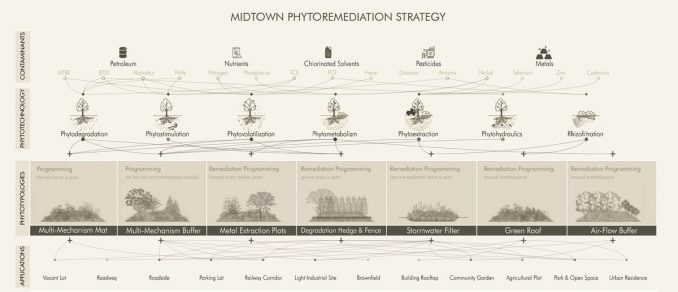
Phytoremediation is then introduced as an ecological and economical solution for soil decontamination. Applying phytoremediation could guarantee agricultural productivity and food safety as well as eliminate negative impacts of food system activities on the surrounding environment.

Some Phyto-technologies such as Phyto-extraction require decades to take effect, so the MidTown SFS design is divided into 3 phases: site preparation, preforming clean-up, and fully implemented SFS. Within the first phase, residential infill, homeless shelter plan and bike lane & bike sharing system is facilitated. Within the second phase, MidTown food lab, MidTown food mall are built and managed, community gardens and urban beekeeping practice is integrated, and food basket distribution spot is set. During the final phase, vacant buildings for Mid-Town food processing, storage, workshop are repurposed, and urban farm, urban orchard and food forest are built and managed.
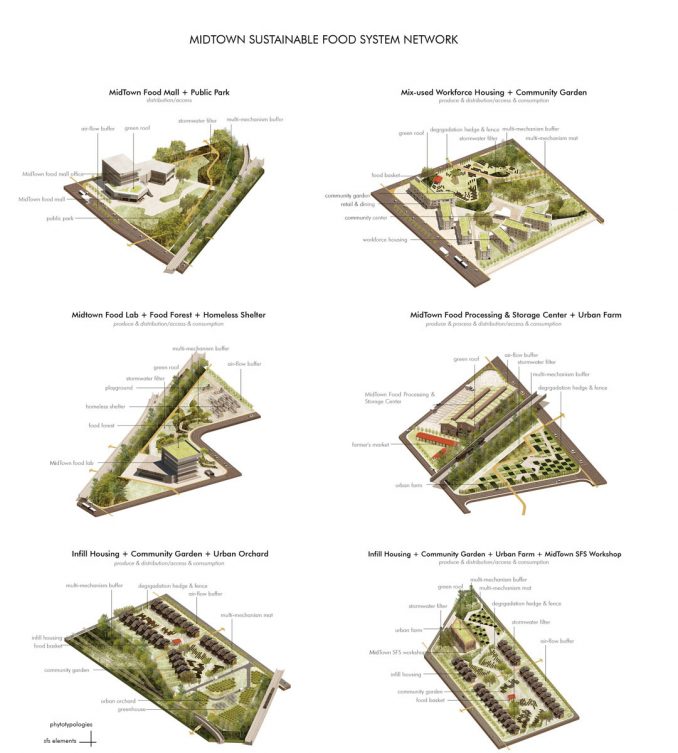
In conclusion, repurposing vacant land to implement SFS will provide an ideal resolution of this timely and urgent issue in Cleveland. A well-designed and well-operated MidTown SFS, is an epitome of the future Cleveland city’s SFS. I believe with the systematic approach, Cleveland will embrace economic and population growth, food justice and social equity, and sustainability again.
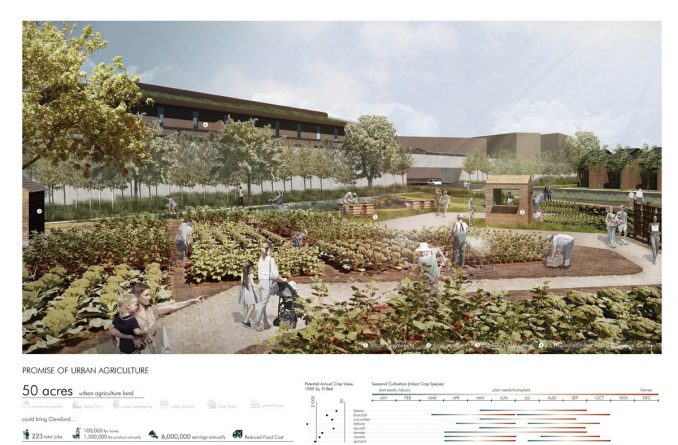
Student Project | Feeding Cleveland | Fan Feng
Student Name: Fan Feng
School: Cornell University
Supervisor: Mitch Glass
